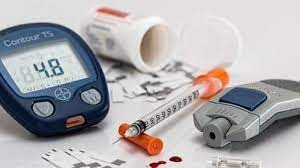How Fiber Aids Blood Sugar Control
Our diet must include fiber since it is essential for controlling blood sugar levels. We will look at the top five food sources that may help in this process as well as how fiber exerts its control on blood sugar in this post.
Knowledge of Blood Sugar
Let’s get the fundamentals down before delving into the intricacies of how fiber affects blood sugar. Your blood sugar, also known as glucose, is the chemical that gives your body’s cells energy. For general health, steady blood sugar levels are crucial.
The Function of Fiber
One important way that fiber differs from other types of carbohydrates is that it cannot be digested by the human body. Fiber is a form of carbohydrate that is present in meals made from plants. Instead, it mostly remains intact as it moves through the digestive system. Because of its special quality, fiber is an effective tool for regulating blood sugar levels.
Fiber: Soluble vs. Insoluble
There are two primary forms of fiber: soluble and insoluble. Both kinds affect blood sugar differently.
Solvent Fiber
A gel-like material is created when soluble fiber dissolves in water. By reducing the rate at which glucose is absorbed into the system, this kind of fiber may aid with blood sugar management. Additionally, it lessens blood sugar rises after meals.
Dissolvable Fiber
Contrarily, insoluble fiber increases the size of the stool and promotes regular bowel motions. Although it has no direct effect on blood sugar, it is crucial for maintaining digestive function, which indirectly aids in controlling blood sugar.
The Top 5 Fiber-Rich Foods for Blood Sugar Control
Now that we know how important fiber is, let’s look at the top five foods that may help you keep your blood sugar levels constant.
1. Oats
Beta-glucans, in particular, are abundant in soluble fiber in oats. These fibers slow down digestion, avoiding abrupt blood sugar increases after meals.
Legumes 2.
Excellent sources of both soluble and insoluble fiber include beans, lentils, and chickpeas. They promote stable blood sugar levels by releasing glucose into the circulation steadily.
3. Natural grains
Fiber-rich foods include whole wheat bread, quinoa, and brown rice. They not only aid in blood sugar regulation but also provide long-lasting energy.
4. Vegetables and fruits
Apples, broccoli, and carrots are just a few examples of fruits and vegetables that are high in fiber. They are a wholesome option for controlling blood sugar since they are minimal in calories.
5. Seeds and nuts
You may add fiber-rich foods like almonds, chia seeds, and flaxseeds to your diet. They include a blend of fiber and good fats that may help control blood sugar levels.
Fiber Inclusion in Your Diet
Take into account these useful suggestions to benefit from fiber’s advantages for blood sugar regulation:
Gradual Increase: Give your digestive system time to adjust before adding meals high in fiber.
Keep Hydrated: To avoid stomach discomfort while increasing your fiber intake, drink lots of water.
Balanced diet: For optimal health, combine fiber with lean proteins, good fats, and moderate amounts of carbs.
Portion control is important since consuming too much fiber may cause bloating and gas.
Consuming meals high in fiber may drastically improve your ability to manage your blood sugar levels. You may encourage stable blood sugar and general well-being by being aware of the function that fiber plays in nutrition and making prudent eating choices. To get the most out of this nutritional powerhouse, keep in mind that moderation and consistency are essential.







